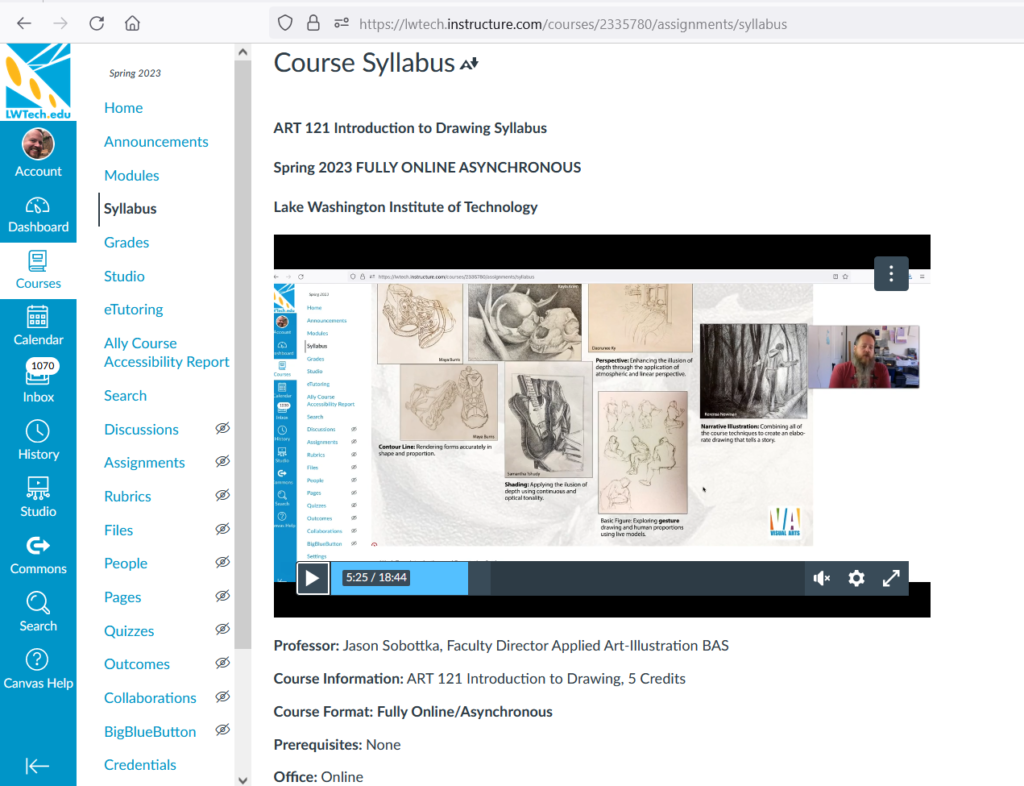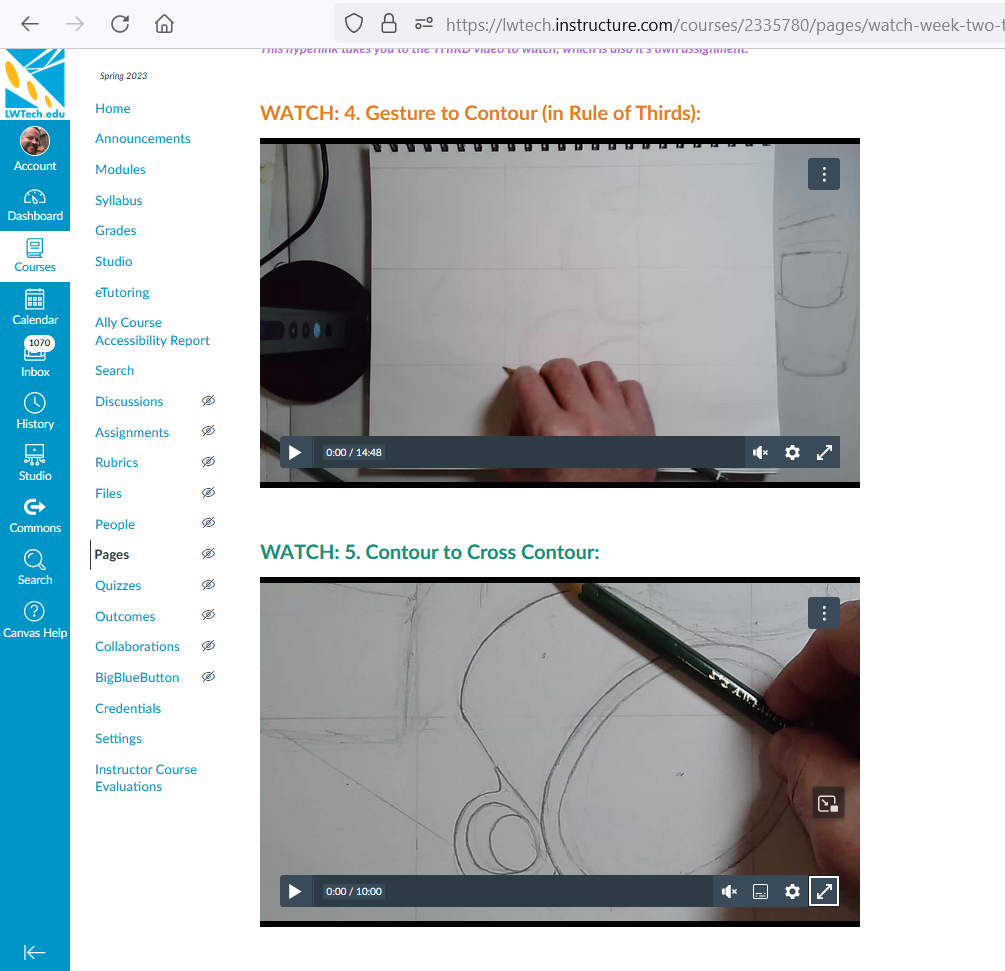
Before the pandemic, LWTECH was committed to offering asynchronous online classes, including art classes like Art Appreciation and Photography Appreciation. Once all classes had to go remote due to COVID-19, studio courses were adapted to remote learning. As the college emerged from the pandemic, myself and my colleagues experienced high quality student projects. The demand for online studio courses continued after many students returned to campus. I set out to redesign several studio courses for a fully online and asynchronous delivery, and have been teaching these art courses.

In addition to learners who prefer the asynchronous online approach, I had to analyze what other student populations might register for fully online courses, enough to offer these sections quarterly. Looking at existing online sections, patterns emerged that included students taking classes at LWTECH, but seeking degrees at other colleges, students taking general education requirements during summer breaks, resident high school students (and Running Start), as well as students who may be out of sequence for their suggested quarterly schedule. Additionally, I researched which projects met course outcomes best in an online class (which assumes students have sufficient workspace of their own), and what materials are most available.

I had initially designed the traditional studio version of ART 121 Introduction to Drawing. The course description and outcomes had to stay the same, but the projects, pacing, content delivery, and project feedback all had to change. In order to reach many learning styles, each project was delivered via a written creative brief, a video overview with captions, curated online tutorials from LinkedIn and YouTube (also captioned), as well as hands-on demonstrations that I recorded using a document camera and CANVAS Studio.
Once instructional content was developed, strategies for grading student outcomes in an online class was necessary. While plagiarism in an art class is not rare, opportunities to cheat seem easier in an online class. To cut down on cheating, or submitting artwork from past classes, I developed a handmade trademark stamp that was required to be placed on each drawing turned in for credit. Training was provided for taking quality pictures of artwork, and students would submit digital files of their drawings, with their trademarks, for evaluation. Weekly modules would open on Mondays at 7 AM and projects would be due typically on Sundays at 11:59 PM. Students who submitted work on time were able to take advantage of reworking and improving their work for increased credit. Modules would lock after two weeks. Online tools in CANVAS as well as Google Image Search were used to cut down on plagiarism.

Student feedback was provided via video and audio recording, written feedback, and digitally-drawn corrections and diagrams directly on student work. Students were able to comment back and resubmit work based on feedback, as well as request one on one meetings via Microsoft Teams.
The fully online ART 121 section was the first to fill in the first quarter it was offered. Subsequent quarters also found the online section popular, and the college is now offering at least one section of asynchronous online ART 121 every quarter (including summer).

Evaluating the online ART 121 took place in three distinct manners. The first involved the traditional student course evaluation. Students overwhelmingly rated the course and the content delivery high, with specific comments about feeling valued in class, that their work had meaning, and that they felt a personal connection to their peers and professor.
The second involved my personal review of online performance versus past studio classes. Looking at attendance and participation in studio classes in comparison to the online classes showed online students earned slightly higher project grades and had a higher project completion rate than their face-to-face counterparts. A greater percentage of the online classes had “exemplar artwork”, or artwork that went beyond assessment criteria, and was deemed worthy of example for future classes.
Third, Sally Heilstedt, Dean of Instruction observed and evaluated my teaching of the online ART 121 in the spring of 2023. She observed that I had created “class assignments that are very well-designed and communicated using a variation of the Transparency Framework.” Additionally, she wrote that my ART 121 course succeeds in increasing accessibility for art students, and that I am an “expert demystifier” because my “teaching materials break down artistic processes in such a way that even those who fear art or doubt themselves can learn to draw”.
